Health care takes cues from hospitality on customer service
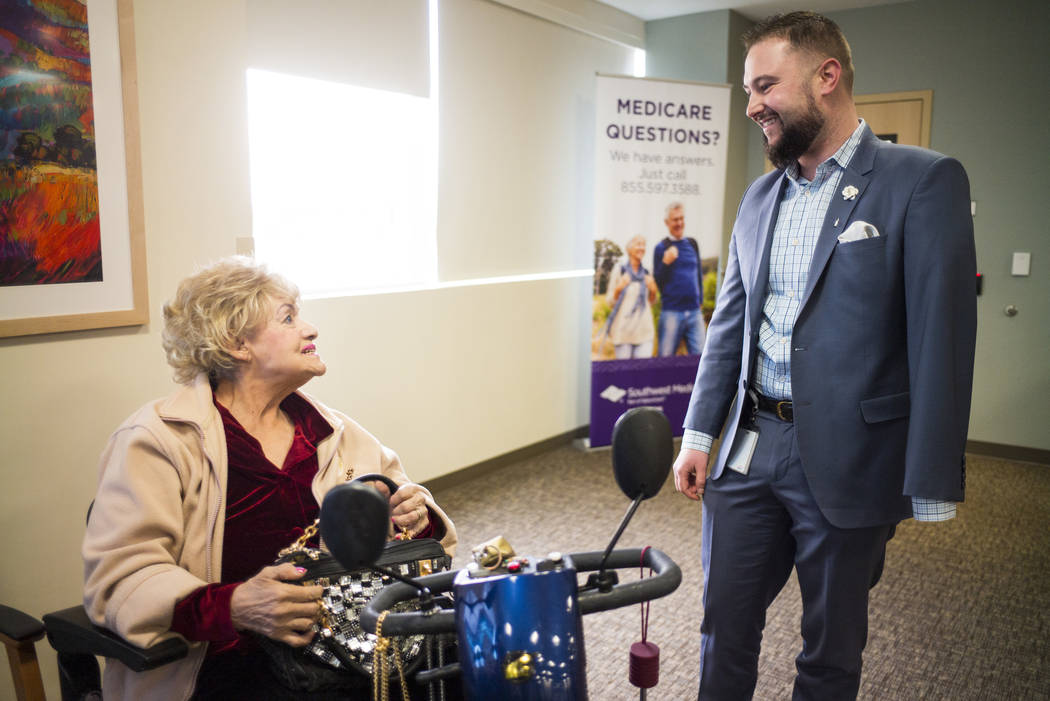
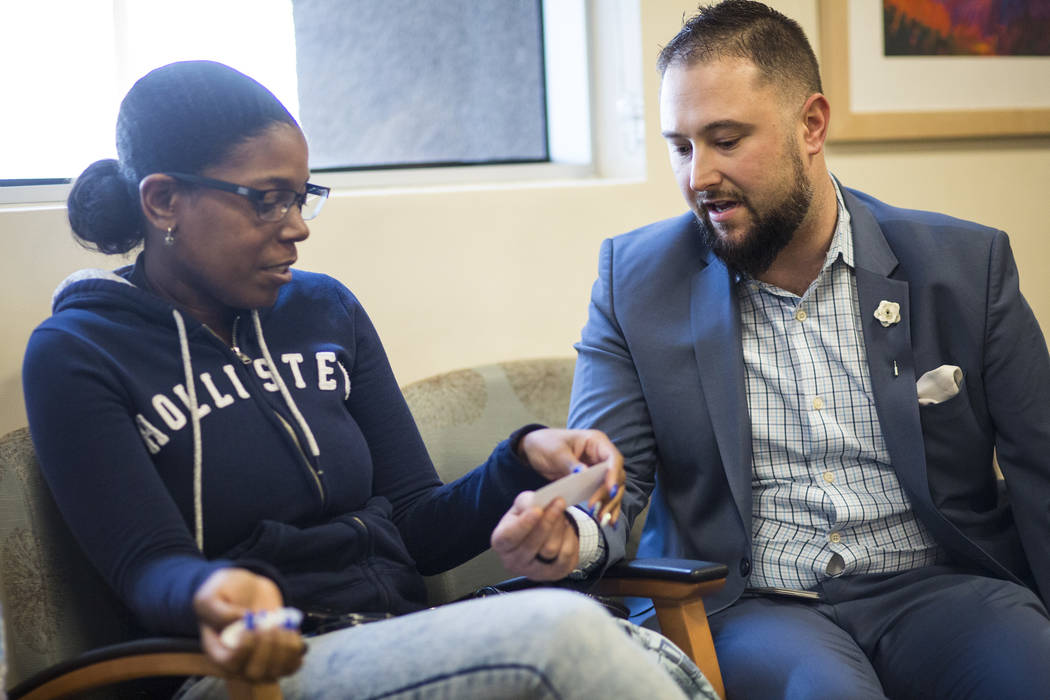

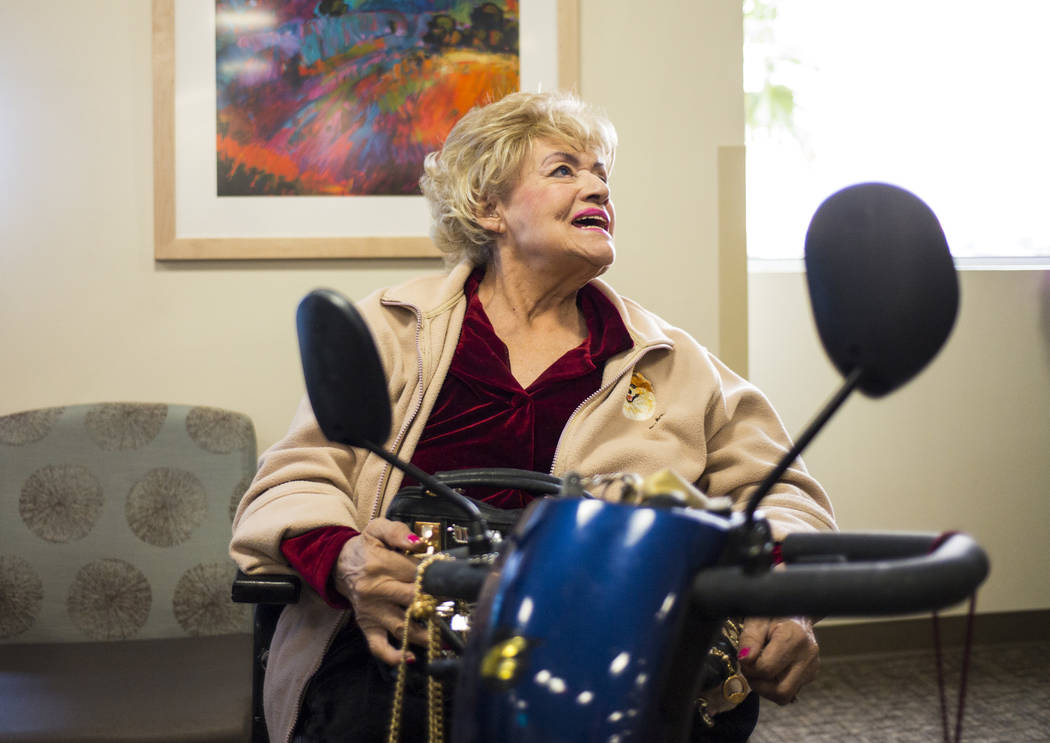

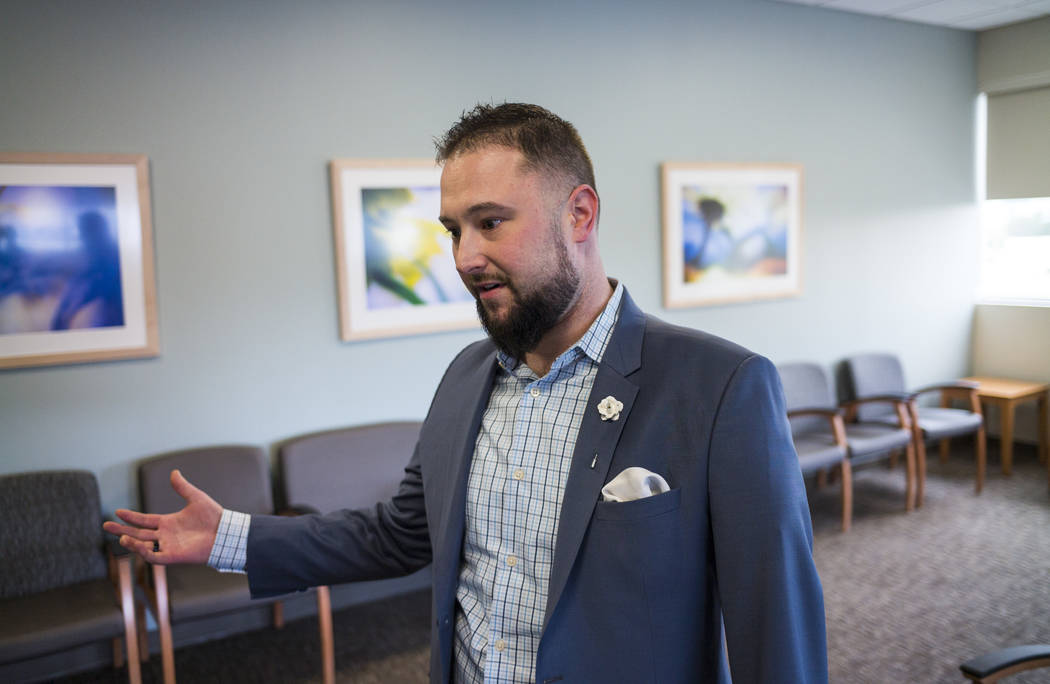
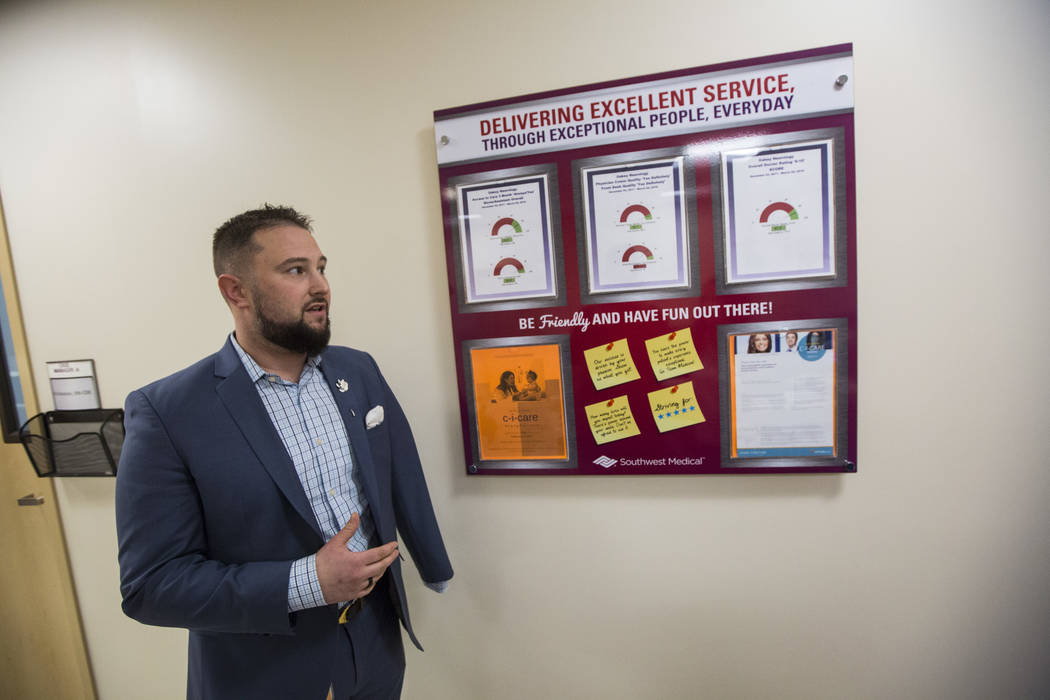
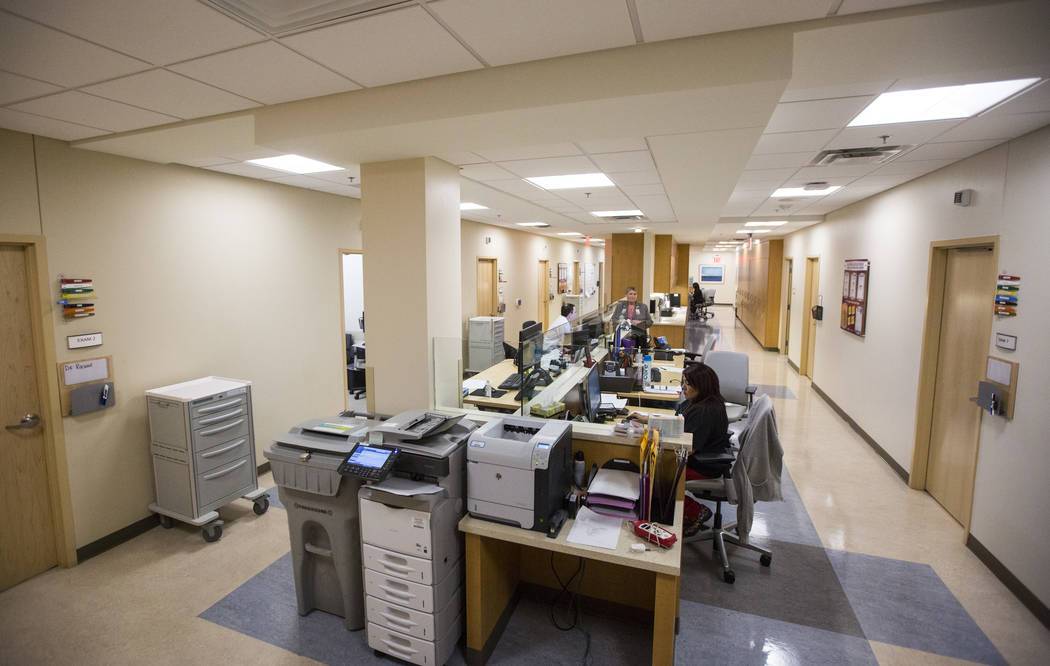

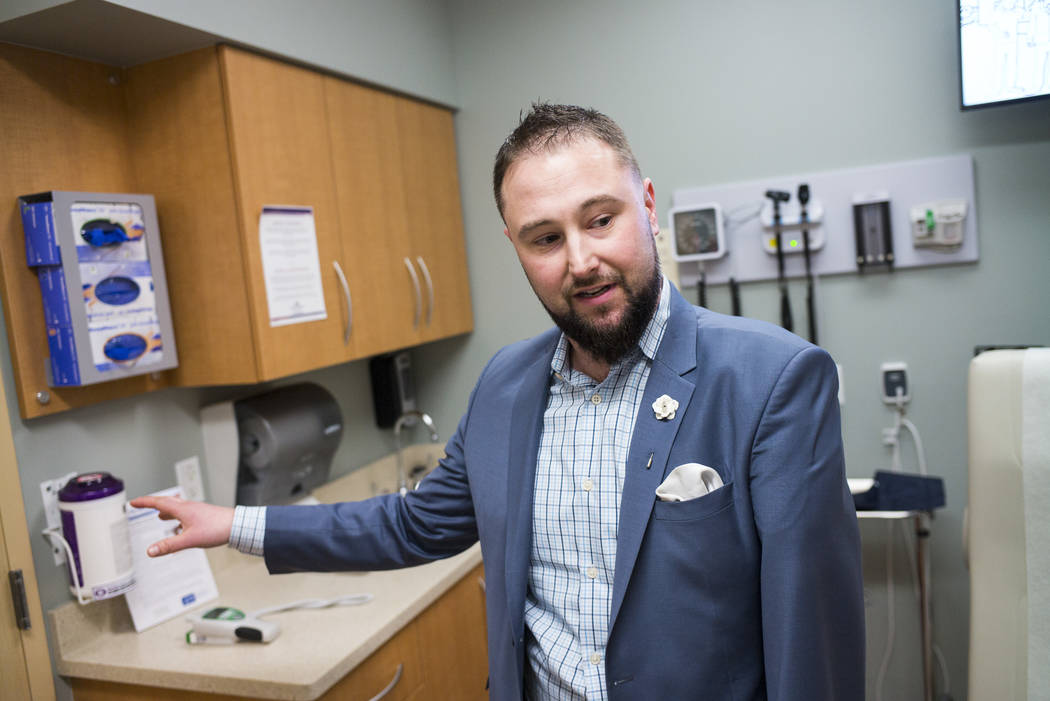
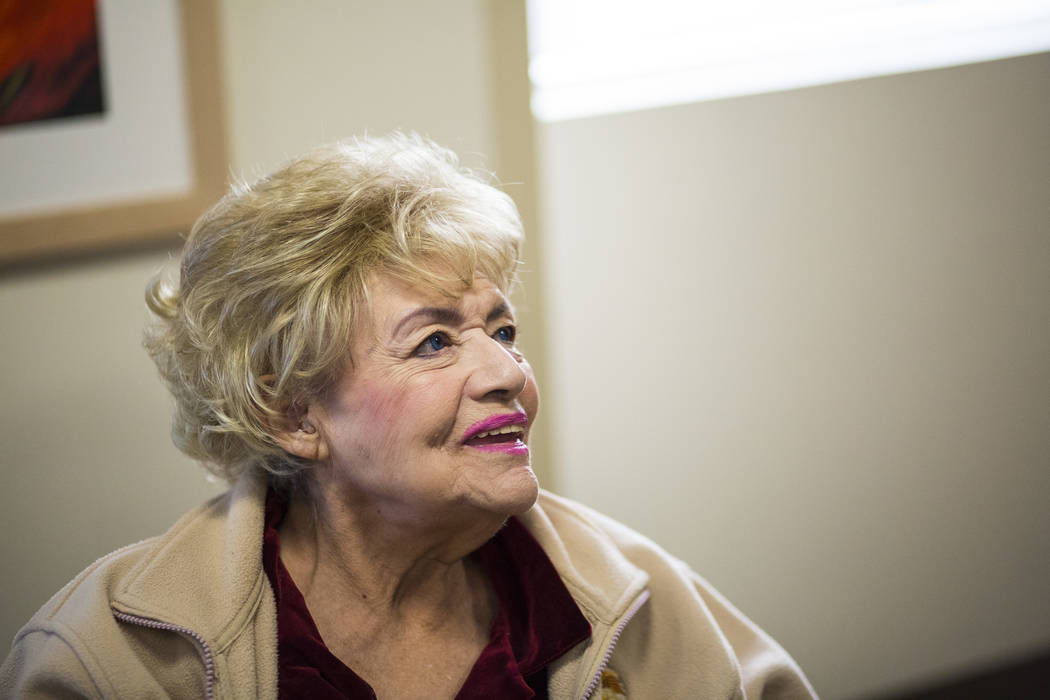
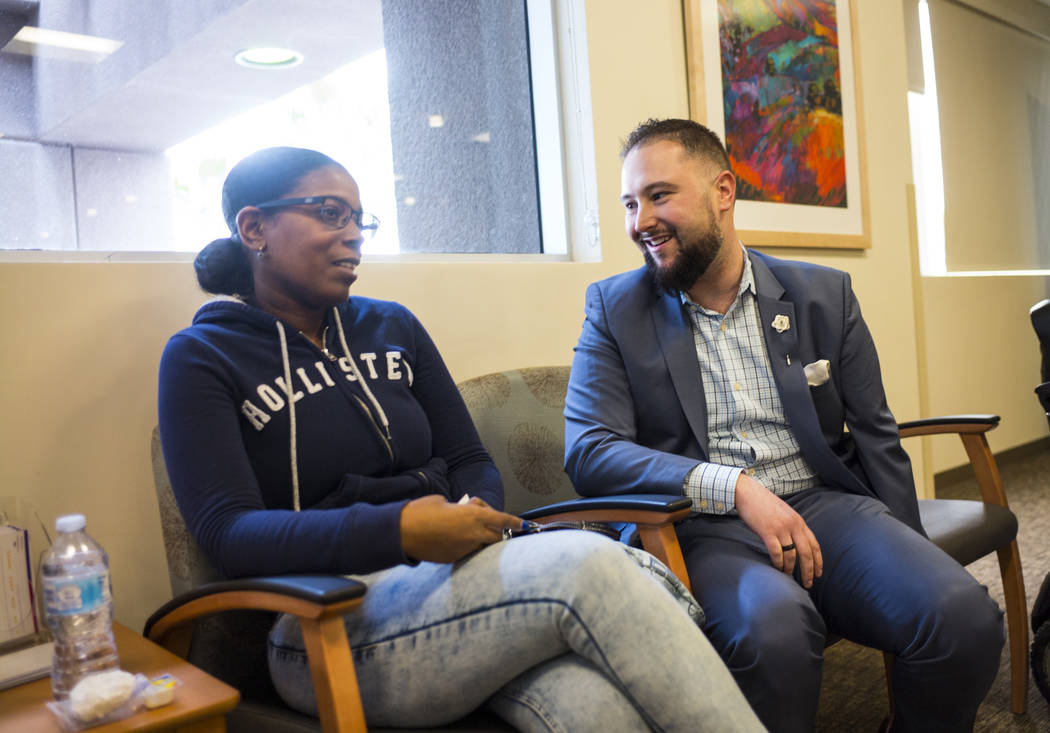
Chris Singer approaches patients and their families sitting in a doctor’s waiting room with a smile every time.
As the OptumCare vice president of patient experience recently made his rounds at the Oakey Boulevard offices of Southwest Medical Associates, he asked visitors how he, personally, could make seeing the doctor a more pleasant experience.
“Can I ask you a quick question, an honest question?” Singer asked 34-year-old April J., who requested her last name be omitted. “When you think of Las Vegas, you think of the service experience that is hospitality. How do you think we could improve it for health care?”
She took a minute to think, then said wait times can be too long, especially when a person isn’t feeling well.
Although Singer couldn’t act on April’s suggestion that day, he offered his card. “If there is anything that you discover that you need, my cellphone number is on there,” Singer told her, before thanking her for her time.
In the Entertainment Capital of the World, medical groups are increasingly taking cues from our city’s biggest industry — hospitality — as they try to improve patient experiences. Happier patients make for loyal patients, they are finding, just as resorts use incentives to entice customers to return.
It all comes down to funding, as the government ties those experiences to reimbursement dollars based on formulas developed over the past several years by the Centers for Medicare and Medicaid Services.
At Southwest Medical and DignityHealth-St. Rose Dominican Hospitals, for example, the leaders in patient experience come straight from the Strip — Singer worked with St. Rose’s Jason Grattini at The Mirage before the two moved to health care.
At UNLV, the School of Medicine is partnering with the College of Hospitality in training future doctors.
“The way people choose care is no longer based on their health plan,” Grattini said. It’s based on their recovery experience.
Instead of arbitrarily picking a doctor or hospital, patients today often consider factors including cleanliness of a facility, the technology available and the level of customer service delivered by staff, Grattini said.
“These are things that they’re starting to share on Yelp and on Facebook,” he said. “If we’re not doing things that are distinctive and remarkable to them … they’re not going to choose us.”
“What it means for the patient is now health care organizations are focusing on making sure the patients are having a better time,” said Stowe Shoemaker, dean of UNLV’s College of Hospitality.
Where numbers come from
The federal Centers for Medicare and Medicaid Services introduced the Hospital Consumer Assessment of Healthcare Providers and Systems Survey (HCAHPS) in 2006 as a tool to measure patient perspectives of hospitals.
Six years later in 2012, the scores became instrumental in how much the government reimburses hospitals for care. The higher the score, the more the hospital gets paid.
CMS began consolidating hospital scores into a one- through five-star overall rating in 2016. All hospitals in the Las Vegas-area received one or two stars on the most recent overall assessments, which came out in December.
Ratings from patient experience surveys, which cover 11 topics and are one factor in a hospital’s overall rating, generally come in at or below national averages.
That may change post-Oct. 1, according to Chris Cochran, chairman of the health care administration department at UNLV’s School of Community Health Sciences.
When updated ratings are released in April, Cochran said he wouldn’t be surprised to see if Las Vegas-area hospitals received better scores for the care they delivered after the mass shooting on the Strip last year, which left 58 dead and hundreds wounded.
What works?
The focus on enhancing a patient’s experience beyond healing isn’t entirely new. Quint Studer, an entrepreneur and philanthropist based in Florida, is known for putting patient experience “on the map” more than two decades ago at Holy Cross Hospital in Chicago, Tierney said.
“At that point in time, health care (wasn’t) really into the concept of doing customer service,” Tierney said. “We did not think of ourselves being akin to anything in hospitality, God forbid.”
Improving communication is a large part of bettering that patient experience, experts say.
“I think in general trying to be nice to patients, that’s more of a key factor,” Cochran said.
At Sunrise Hospital and Medical Center, good communication can be as basic as staff helping direct lost family and friends in the hospital’s halls, Vice President of Patient Experience Cyndi Tierney said.
It also includes listening to patients when they say they’re bored or sending a volunteer in to read with them or play card games.
“The voice of the consumer, it’s growing. It’s been growing,” Singer said. “Much of the public selects doctors … much like searching for a restaurant or hotel.”
Beyond bettering communication, health care systems are also looking to improve aesthetics for appeal and function.
Singer said that includes updating furniture and light fixtures.
At the St. Rose Dominican San Martin campus on Warm Springs Road, staff took the “Do Not Touch” signs off a baby grand piano to encourage people sitting in the lobby to share their talents.
The hospital also recently started using two glass walls originally meant to display performance metrics for sharing inspirational quotes instead.
“In an environment that’s so restrictive, to give patients the opportunity to react with their environment I think is therapeutic,” Grattini said.
About the HCAHPS Survey
The HCAHPS Survey was created in partnership with the Agency for Healthcare Research and Quality in 2002 and implmented in October 2006. The survey, administered by mail or phone, is a standardized method for the federal government to track patient perceptions of hospitals.
The Centers for Medicare & Medicaid Services, which administers the survey, withholds a percentage of Medicare payments from acute-care hospitals to redistribute nationwide based on quality of care. The HCAHPS survey results account for 25 percent of the hospital’s Total Performance Score, which dictates the amount of money a hospital is reimbursed.
Hospitals rely on Medicare funding to keep their doors open, UNLV’s Chris Cochran said.
“Any loss of revenue could be significant for them,” he said.
What makes up “patient experience”
The survey consists of 27 questions, 18 on the patient’s hospital experiences. Measures that affect star ratings include:
Communication with doctors and nurses
Responsiveness of staff
Communication about medicine
Cleanliness and quietness
Care instructions after discharge
Overall hospital rating and willingness to recommend
Contact Jessie Bekker at jbekker@reviewjournal.com or 702-380-4563. Follow @jessiebekks on Twitter.
About the HCAHPS Survey
The HCAHPS Survey was created in partnership with the Agency for Healthcare Research and Quality in 2002 and implmented in October 2006. The survey, administered to a randomized patient sample by mail or phone, is a standardized method for the federal government to track patient perceptions of hospitals.
The Centers for Medicare & Medicaid Services, which administers the survey, withholds a percentage of Medicare payments from acute-care hospitals to redistribute nationwide based on quality of care. The HCAHPS survey results account for 25 percent of the hospital’s Total Performance Score, which dictates the amount of money a hospital is reimbursed.
Hospitals rely on Medicare funding to keep their doors open, UNLV’s Chris Cochran said.
“Any loss of revenue could be significant for them,” he said.
What makes up “patient experience”
The survey consists of 27 questions, 18 on the patient’s hospital experiences. Measures which play into the star rating include:
— Communication with doctors and nurses
— Responsiveness of staff
— Communication about medicine
— Cleanliness and quietness
— Care instructions after discharge
— Overall hospital rating and willingness to recommend













